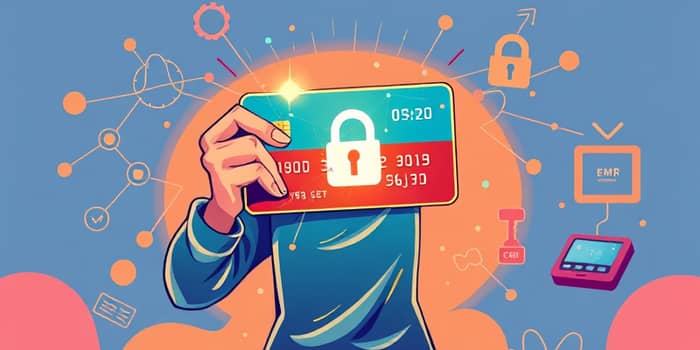
Every day, millions of financial transactions flow through digital channels and brick-and-mortar stores. With fraud on the rise, learning to defend your cards is essential. This guide equips you with actionable advice for both online and offline protection.
Credit card fraud is surging globally. In 2024, fraudulent attempts climbed by 46% year-over-year, with ecommerce-related fraud spiking by 140% in three years. Losses have reached alarming heights—projected at $43 billion globally by 2026. The United States alone accounts for 46% of global fraud losses, and over 150 million Americans were victimized last year.
Cyberattacks now lead data breaches, with 1,613 attacks affecting nearly 189 million people in the past year. While online (card-not-present) fraud dominates headlines, physical card theft and counterfeit schemes remain persistent threats.
Protecting your card online starts with cautious habits and smart technology choices. Follow these steps to minimize your risk:
Regular monitoring is equally vital. Review statements frequently for small “test charges” that fraudsters use to verify a stolen card. If something looks suspicious, report and dispute it at once.
Even in physical stores, fraud can occur. Simple vigilance can keep your card safe:
Act swiftly if you suspect fraud. A prompt response can limit your losses and help authorities trace the culprits:
Time is of the essence—reporting within days of detection significantly increases your chances of a full recovery.
Merchants also play a crucial role in preventing fraud. By adopting robust security protocols, they protect customers and their own bottom line:
First, maintain strict adherence to PCI DSS compliance standards by encrypting transactions, limiting system access, and deploying firewalls. Never retain sensitive cardholder data beyond the transaction period. Implement machine-learning-based fraud detection tools that analyze transaction patterns in real time and flag anomalies.
Staff training is imperative. Employees should recognize red flags—such as mismatched signatures or suspicious customer behavior—and know the proper steps to halt potentially fraudulent transactions.
Innovations in payment processing are making cards safer than ever. Key technologies include:
Tokenization and advanced encryption that replace sensitive card data with unique tokens, rendering stolen information useless. AI-driven fraud detection systems that evaluate transaction risk scores instantly, minimizing false positives. Address Verification Systems (AVS) and CVV checks that confirm cardholder authenticity before approval.
Embracing mobile wallets with biometric authentication can further reduce exposure, as these platforms never expose actual card numbers during payments.
Security is an ongoing commitment. Cultivate these habits for lasting protection:
By staying informed and vigilant, you build a resilient defense against evolving threats.
Credit card fraud is a formidable adversary, but with proactive measures and smart technology, you can reclaim control. Whether online or at the checkout counter, empower yourself with knowledge and tools to keep your finances secure. Start applying these tips today and transform your financial safety from vulnerable to vigilant.
References













